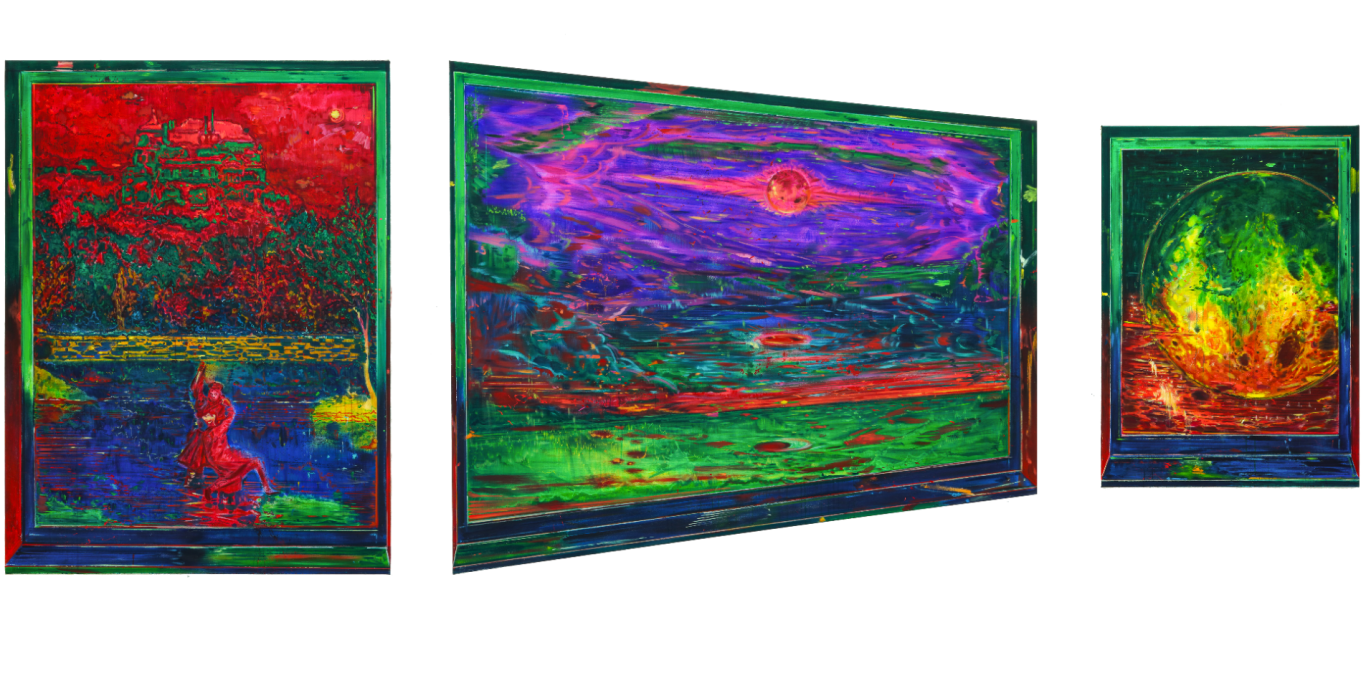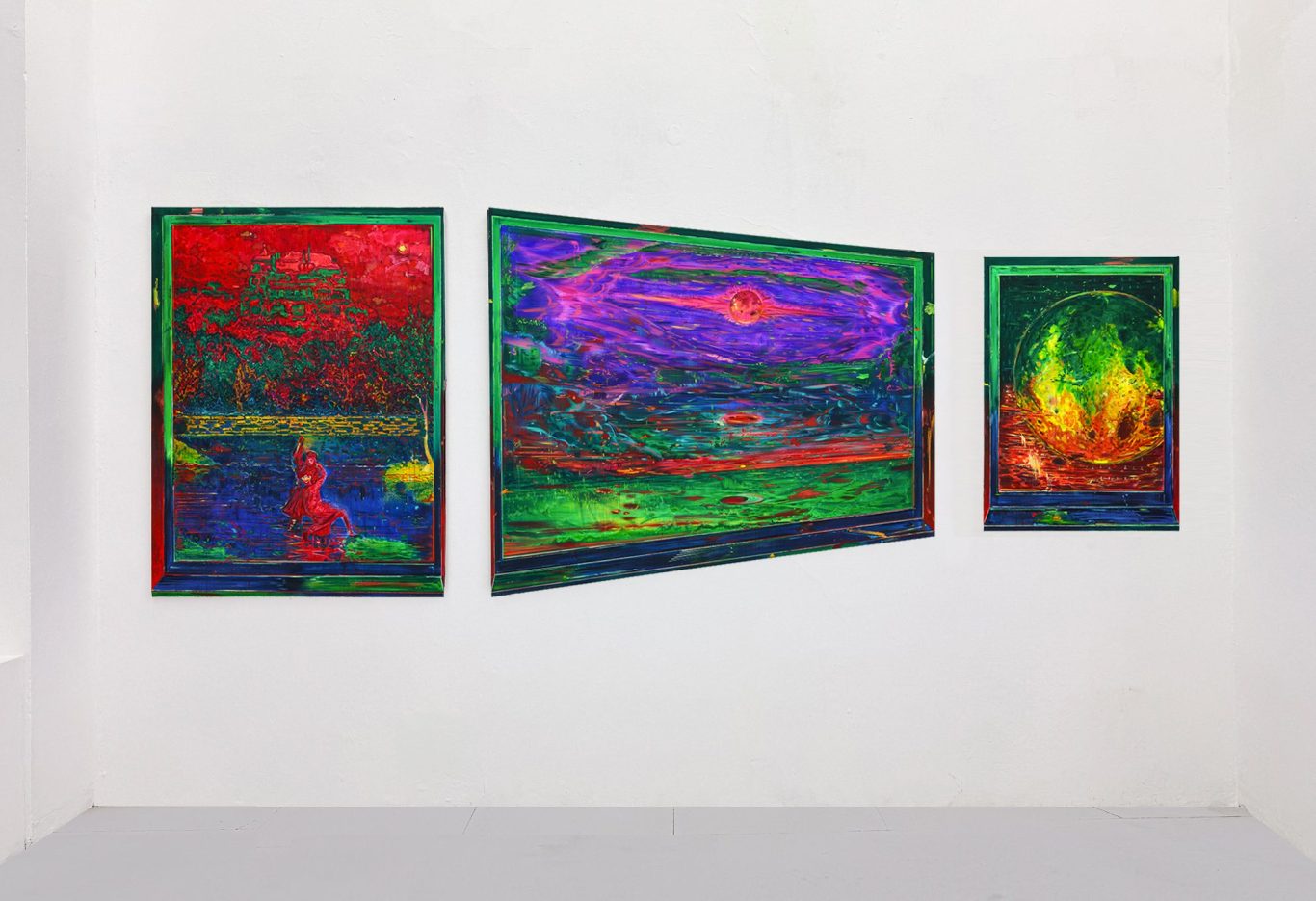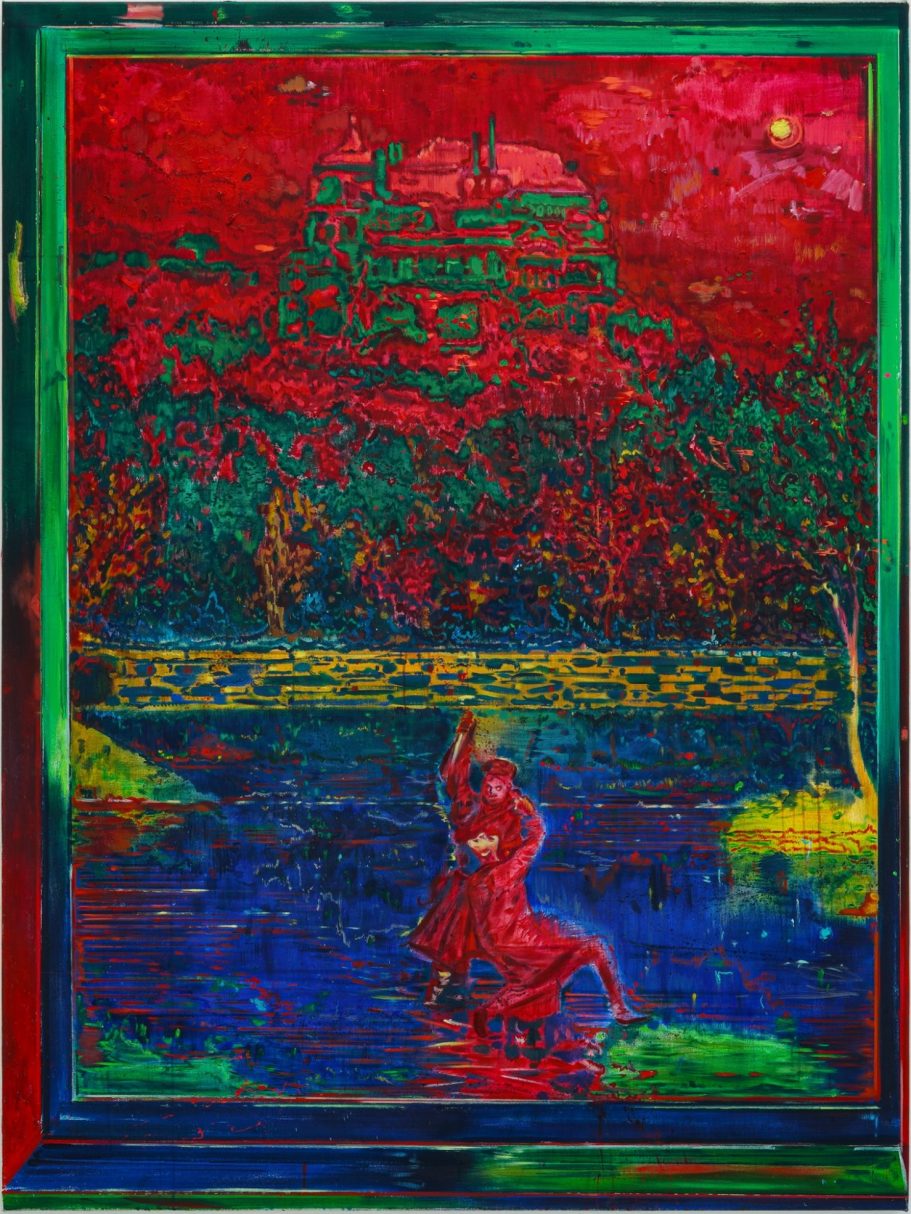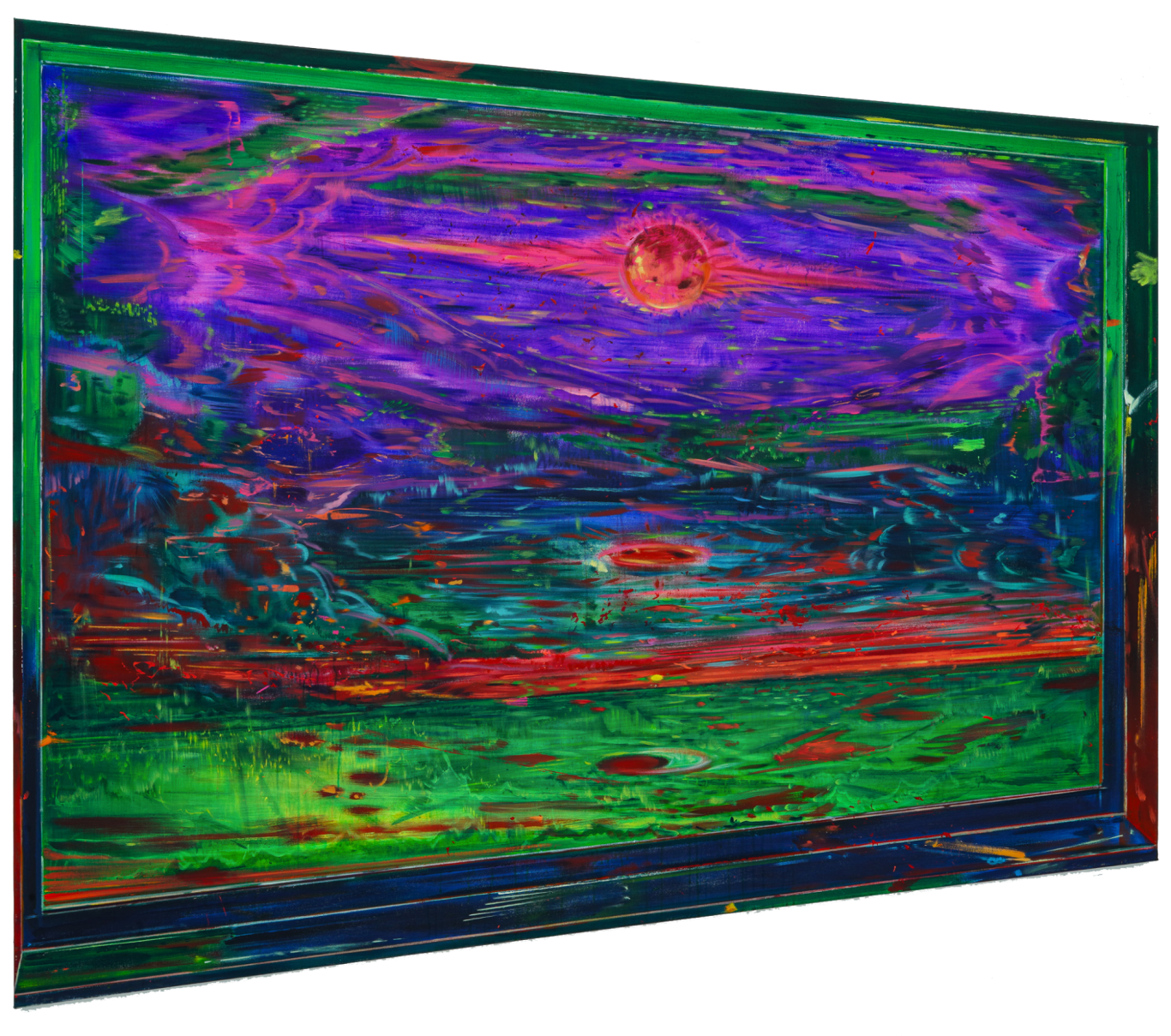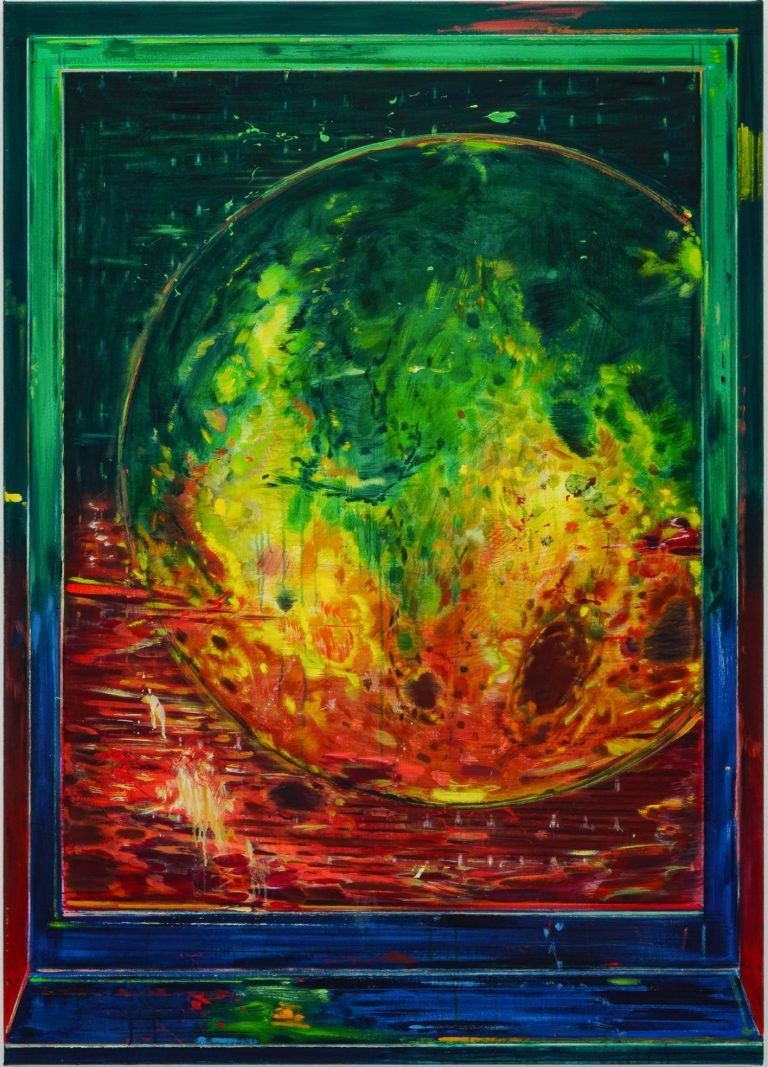LAWS
Graduation Exhibition 2025 in Kunstakademie Düsseldorf
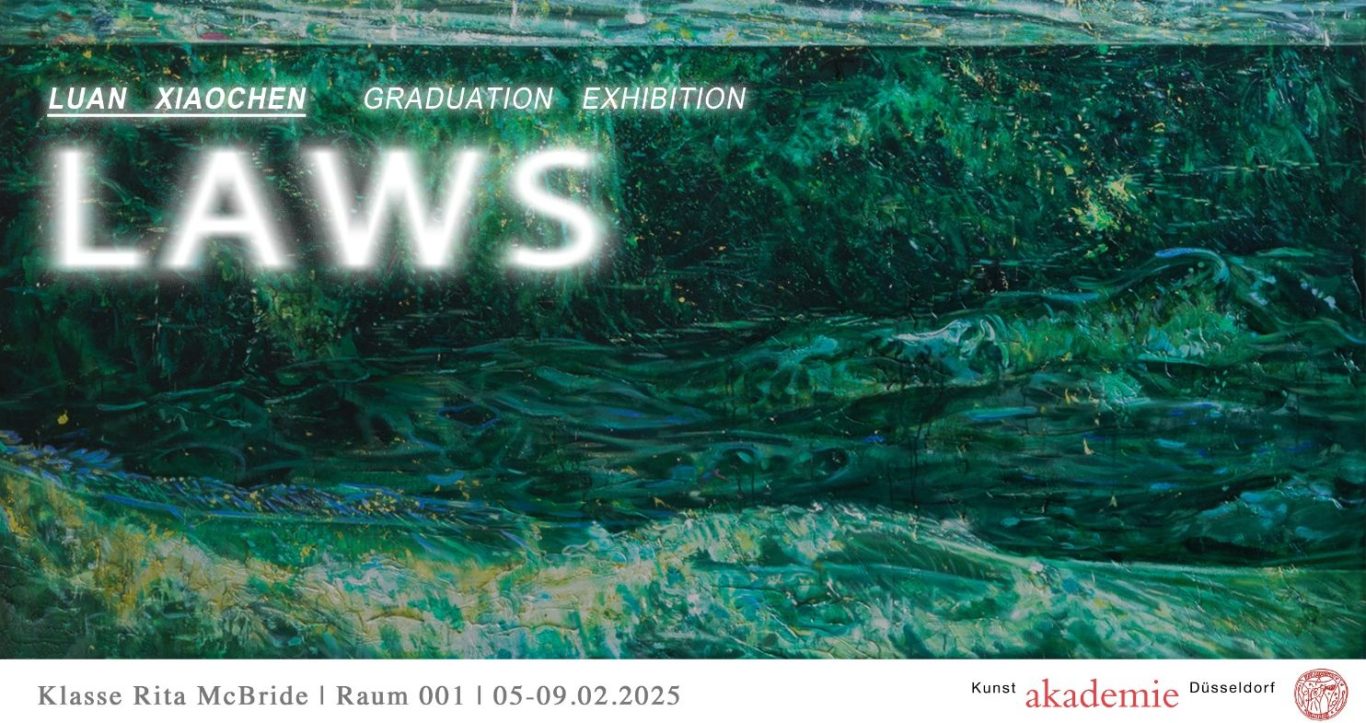
When I realized I could temporarily possess it, I became aware of its undeniable “time-sensitivity,” far surpassing other exhibition spaces I’ve experienced. Perhaps this is due to the building’s history, or perhaps because I’ve spent so many years studying here, leaving me with complex emotions about it. At first, I joked that the pipes and radiators were too ugly—I’ve tolerated them for six years, and now I can finally cover them up. Using the simplest method, I wanted to make them “disappear” into Room 001. But as I developed this idea, I gradually realized I wanted to add a sense of “confronting the unknown,” to make Room 001 unfamiliar and turn it into a conceptual cave. I imagine myself arriving here like someone from the Stone Age, directly using natural resources to meet my artistic needs.
“Having nothing at all” is the primitive state of human dwellings and also reflects humanity’s future demands for architecture. The similarity between primitive and futuristic spaces lies in their stripping away of superficiality to reach the essence of things—to provide shelter, provoke thought, and evoke emotional resonance. Space exploration design is a quintessential example of this intersection. For instance, the Mars habitat designed by NASA and the architecture firm BIG is not only minimalistic but also entirely functional, resembling the caves that early humans once depended on. This minimalist aesthetic and functionality represent not only the starting point of human design but also its possible endpoint, symbolizing cycles and belonging. Cycles and belonging reflect humanity’s need for fundamental laws and the integration of art with space, making them one.
Whether the Kunstakademie Düsseldorf building is a mountain or a spaceship, this room serves as a matching cave or chamber. Its form directly serves its purpose: the paintings, sculptures, sounds, and interplay of light and shadow. Together, they form a cohesive whole. The space is simplified because of them, and they, in turn, become clear and legible due to the building and its space.
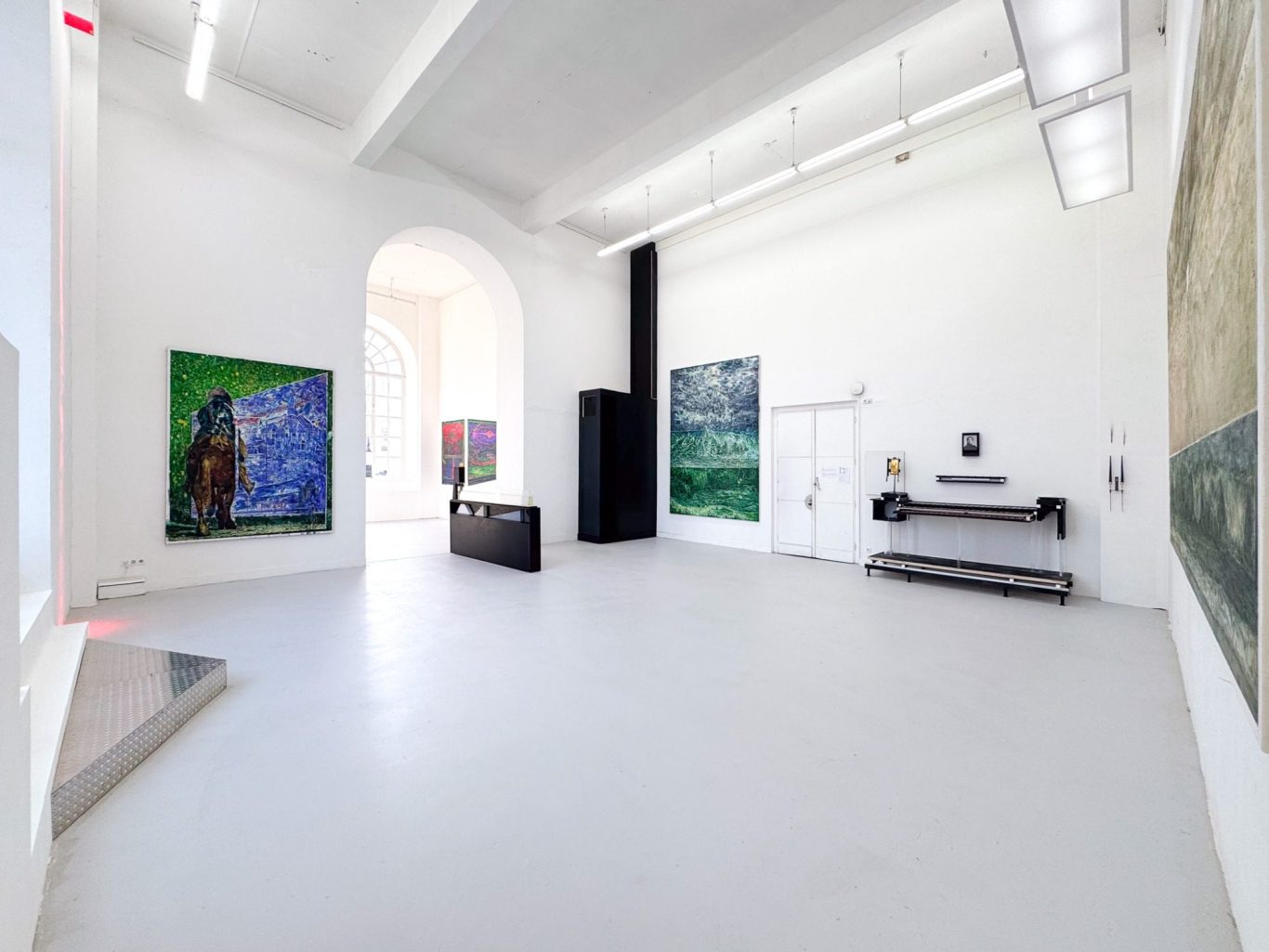
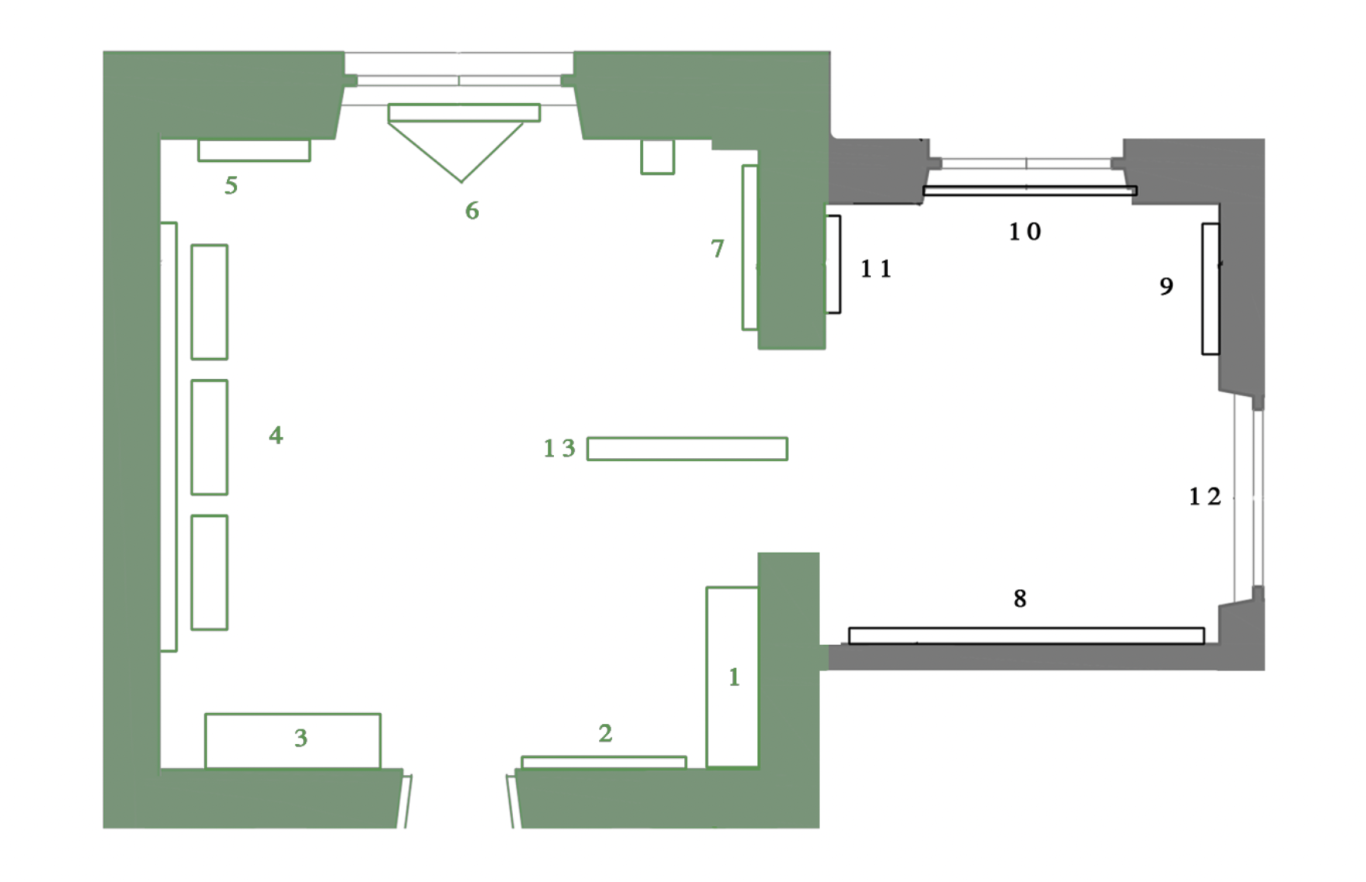
“001” consists of two spaces, and accordingly, Luan Xiaochen has divided the exhibition into two different themes.
The larger space features three sets of installations and three large-scale paintings, constructing his contemplation of the near-religious aspect of art. The “Confession Room” (01, Unforgiven), built on a water tank, forms a spatial installation in collaboration with music created by the artist through sampling and reworking, together with sound artist and composer Gan Hualei. The “Idol” (03, Idol) consists of an altar with 300 figures from art history, either real or AI-generated. At the top of the altar, a sacred icon directly blends childhood portraits of Luan Xiaochen and Professor Rita, expressing the idea that the artist ultimately seeks to become their own “idol” while constantly being influenced by others. The “The Wondrous Being of True Emptiness” (06, The Wondrous Being of True Emptiness) is a void painting installation composed of a black hole, a leper’s cave, and a pictorial void, structured on the original heating pipes. The “Skyfish (Rods)” (02, Skyfish (Rods)), a wave painting, explores how contemporary concepts invading classical motifs can disrupt mysticism. Lastly, the “Motivation” (04, Motivation) speculates on the moment of birth of the “creator god” in art.
01.UNFORGIVEN
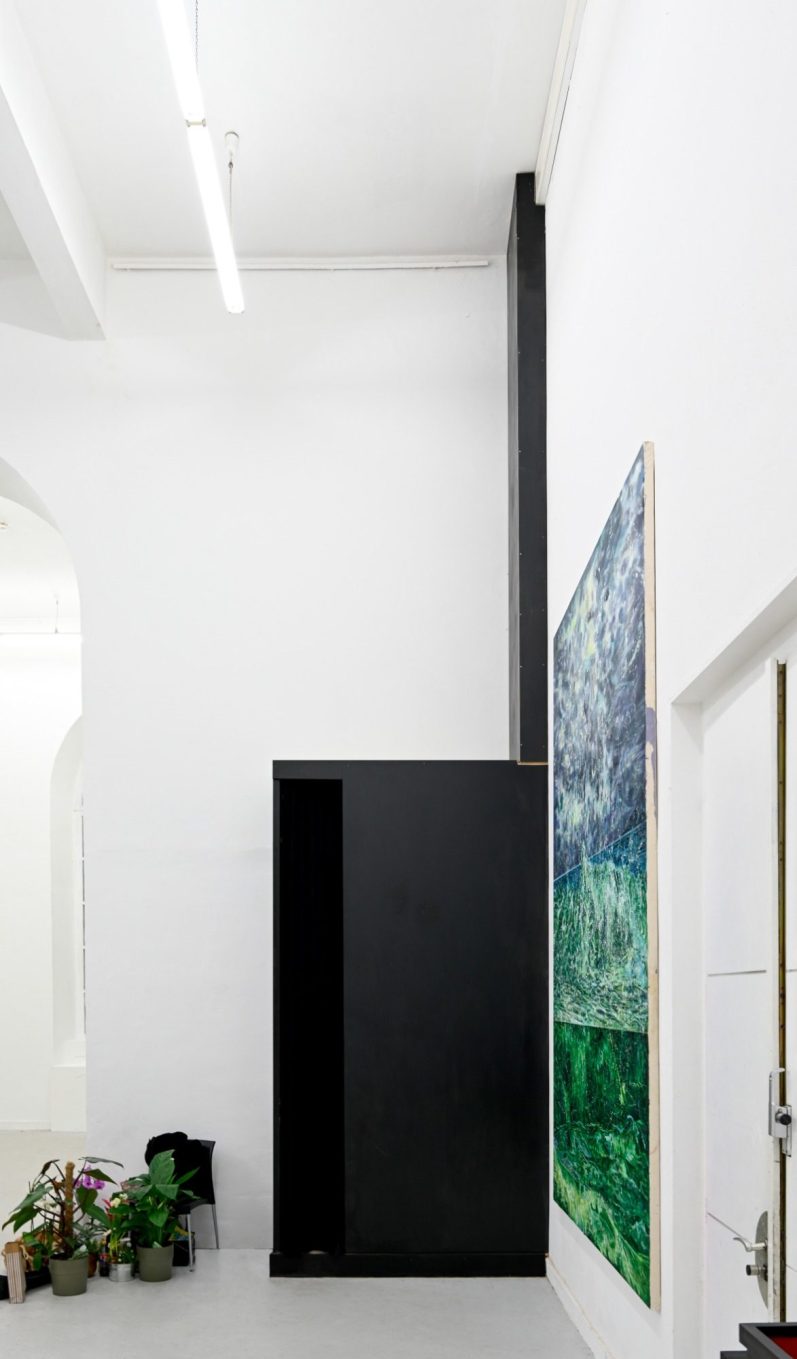
1.UNFORGIVEN, WOOD PANEL, ORGANIC STAINED GLASS, SOUND INSTALLATION, BLACK VELVET, (INTERNAL, STRUCTURE: SINK, PIPES), 720 × 187 × 73 cm
This is a work based on the original structure of the space, connected to the architectural framework. The idea stems from my own studio, where I intentionally constructed a similar space to escape the intrusive thoughts that arise while working. Its form references the confessional in Christian churches—a building within a building. Since my studio is located in a former monastery, I think I have been influenced by this religious architecture to some extent, viewing this small space as a confessional.
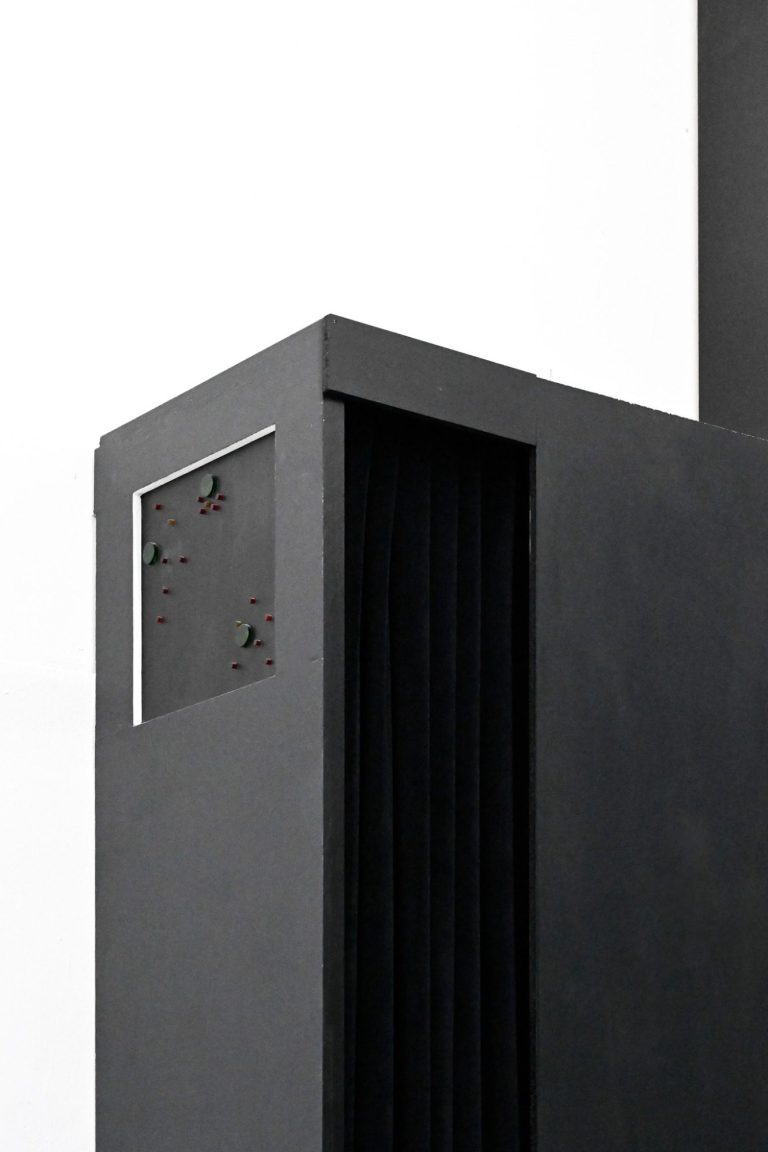
In art, the concepts of right and wrong are dynamic. Like many artists, I often struggle with the lack of clear standards, so I see this space as a place where I can forgive myself.

The upper part of the structure features stained glass, depicting the Summer Triangle constellation. The colors are differentiated according to the primary and secondary stars, and light passes through the glass to form abstract patterns in the dark interior—a meditative abstraction of the summer night sky, which helps me relax. Behind the internal partition, a sound piece I collaborated on with a music producer plays continuously. It consists of sounds like deflating tires and flowing water, symbolizing the accumulation and release of emotions. This sound follows a pipe integrated into the larger building, one vast enough to bear the self-reproach that arises in art. It also represents the things you can feel but cannot see.
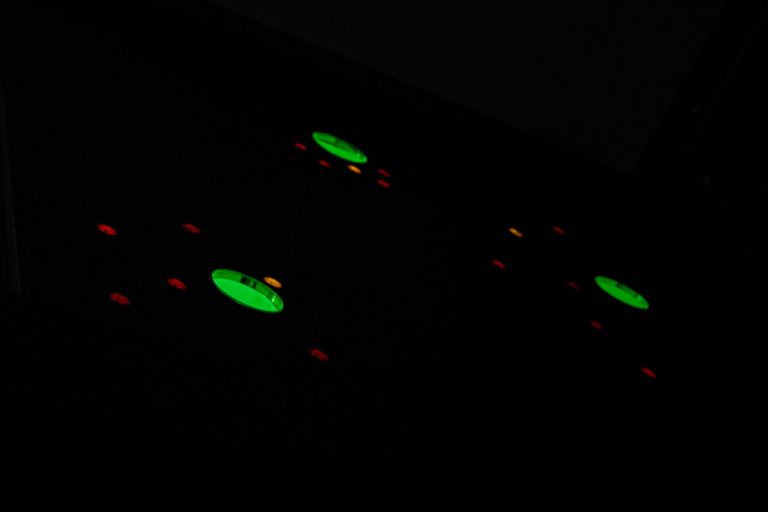
02.SKYFISH(RODS)
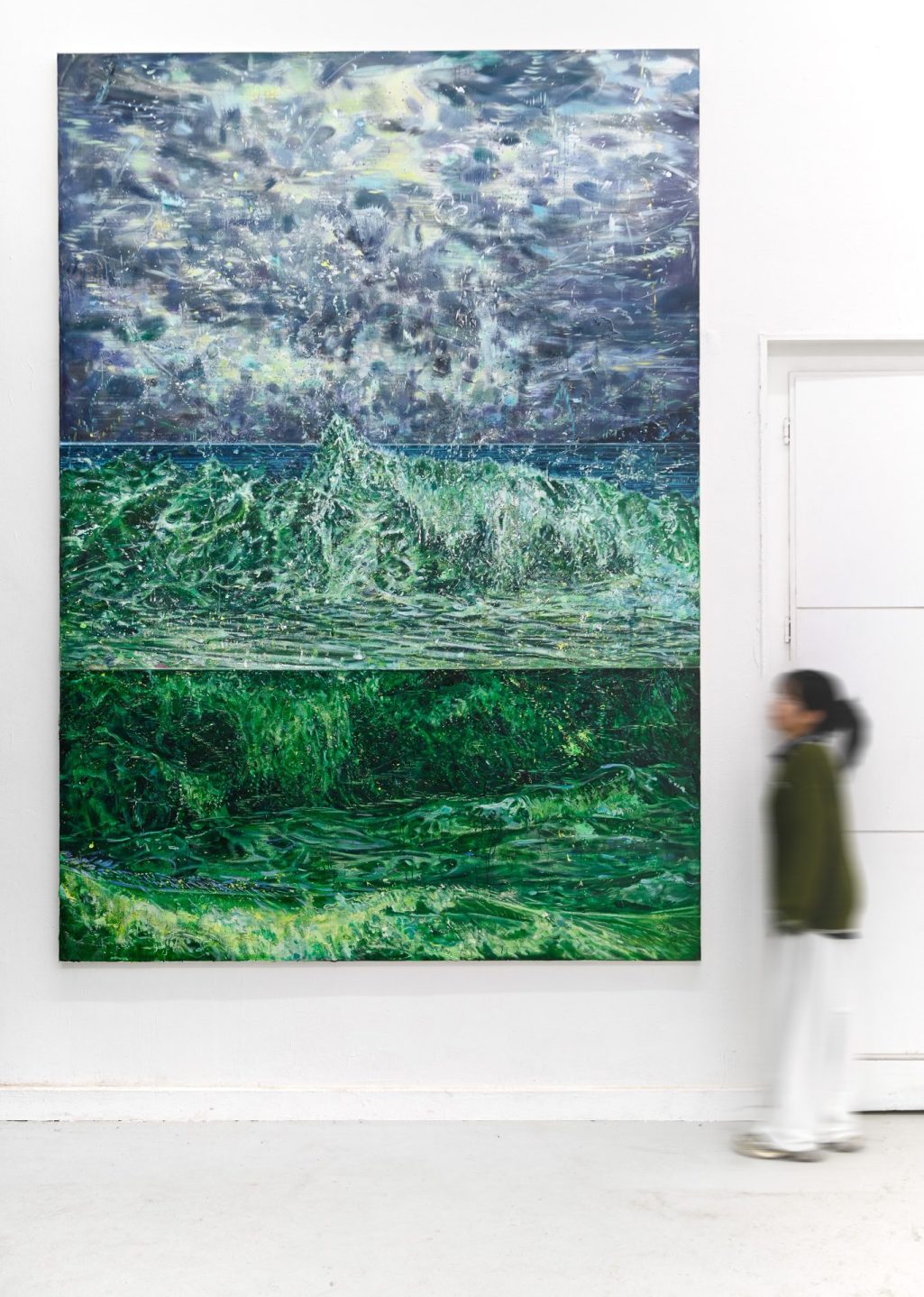
2.SKYFISH(RODS), 2024, OIL AND ACRYLIC ON CANVAS, 340 × 240cm
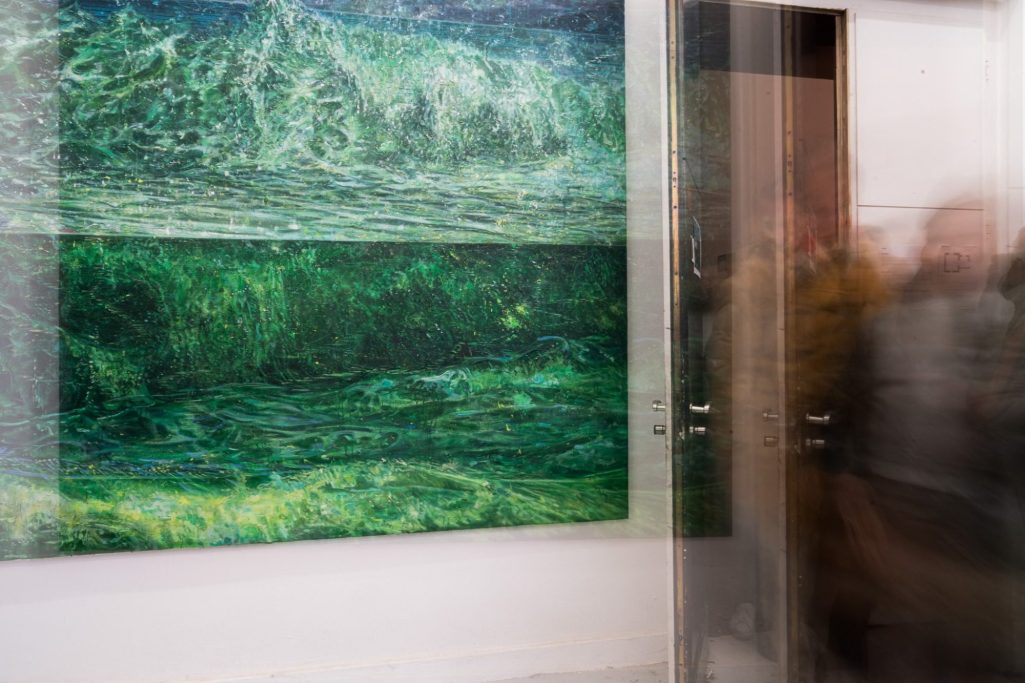
Underwater, on the water's surface, and in the sky, these three states reflect my understanding of the laws governing this planet—or rather, modern humanity's needs for the world. It is not realism, nor is it science. I find it strange that I can only articulate what it is not, without being able to provide an answer. I know it is something humanity needs. It resembles us—humans. In painting, it is liquid imitating liquid, a mirror of media blending and colliding under the influence of gravity.
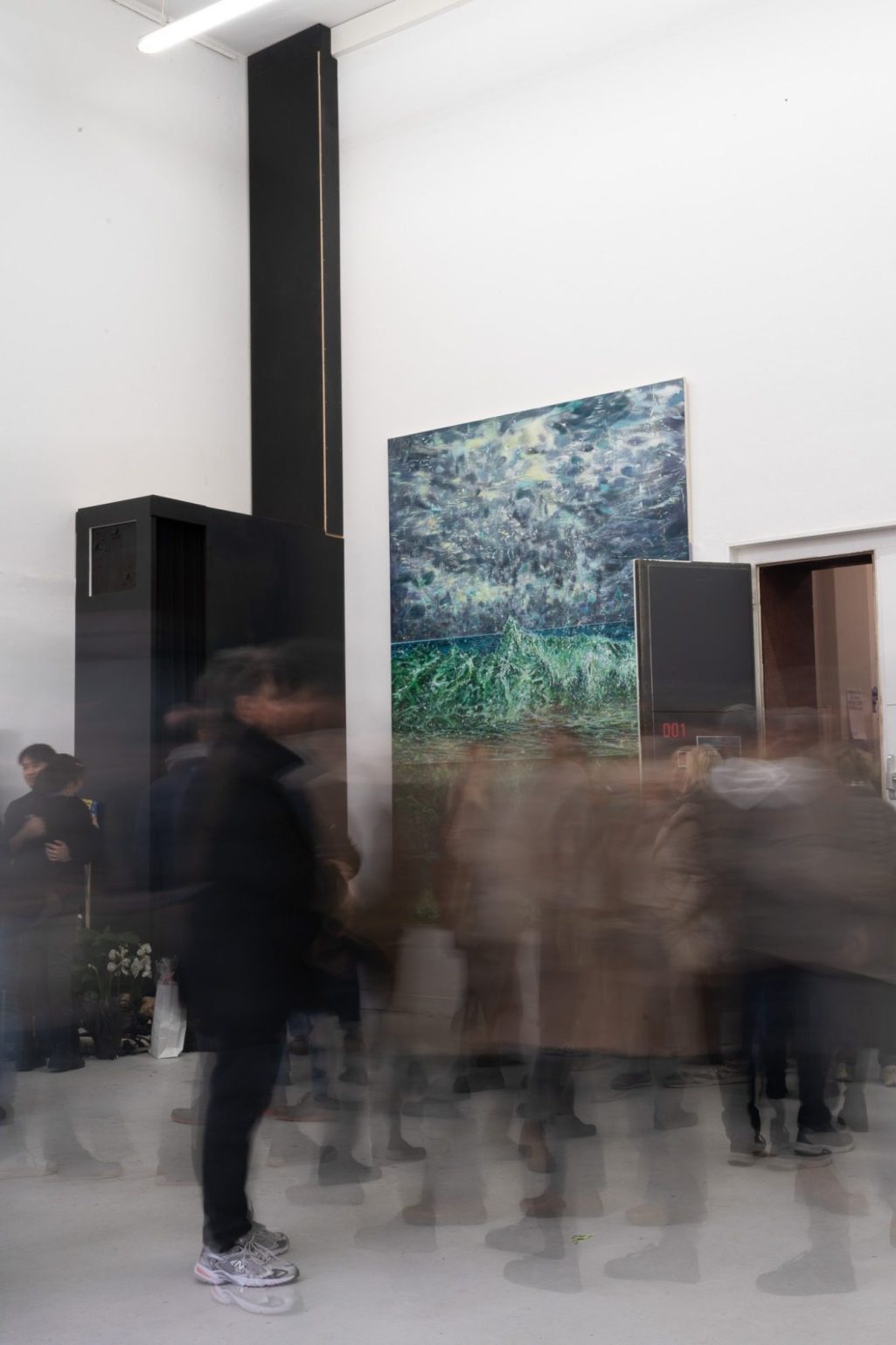
I suspect these laws will be missed even if humanity migrates to Mars. As long as humans remain within their physical shells, they will yearn for the comforting "laws," for the sense of security brought by unchanging principles.
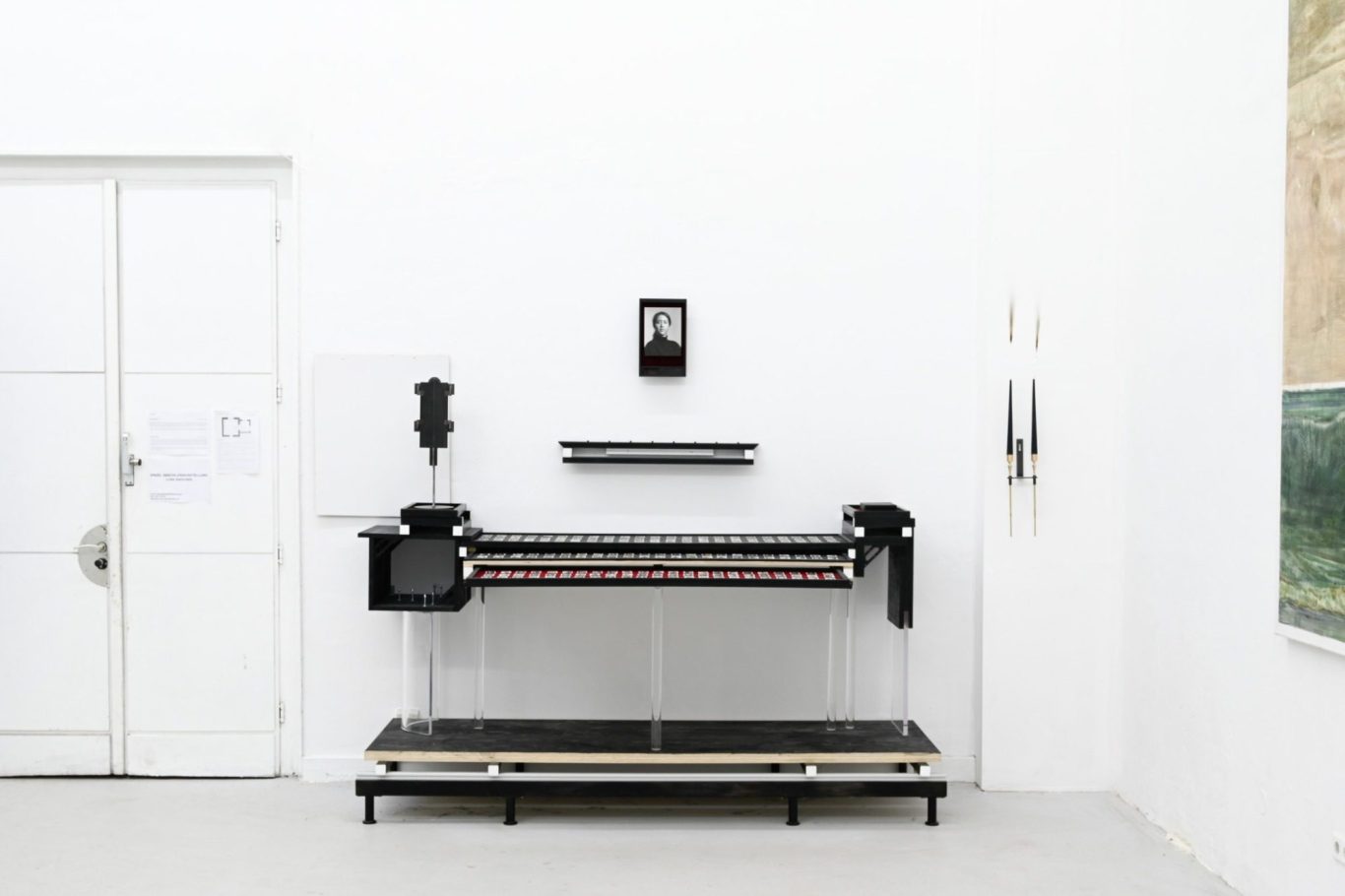
3.IDOL, 2024-25, WOOD PANEL, PLEXIGLASS, DIGITAL INKJET PRINT, RED VELVET, STEEL, CANDLE, COPPER, VARIABLE DIMENSIONS

Is art a religion? Is it polytheistic? What is its doctrine? How many sanctuaries and saints does it have? Has anyone ever martyred themselves for it?
Undoubtedly, today, these questions all have affirmative answers. During the first exhibition of Idol, I selected 300 painters, sculptors, architects—artists—who have influenced me to varying degrees.
This compilation forms a kind of personal art history, representing the order in which a knowledge system is constructed. It resembles the loose genealogical classifications or tree diagrams structured by a certain authority, growing over time from West to East, past to modernity.

In art, idol is necessary. Yet, in the end, one must become their own idol—self-worship, self-respect—eventually entering a cycle where they are followed by others.
Idol worship requires both form and name. In the pre-image era, artists left behind self-portraits (or sculptures) to preserve their likenesses, but undoubtedly, their works also functioned like passport photos. Self-portraits became "spiritual portraits," shifting focus away from the artist's appearance and toward how they manifested: their character, aesthetics, skills, and mental states. This has certainly led to regrets—my impression of Goya, for instance, is largely shaped by his final self-portrait, where his face bears eyes staring into the abyss. Similarly, I think of da Vinci as the wise, bearded figure of his later years.
With the advent of the image era, artists could finally appear as living, breathing humans. Gigantic posters of artists' portraits accompanied by bold, titular names became exhibition advertisements. Inside the galleries, their statements, like Delphic oracles, adorned the walls. In Andy Warhol's era, he even succeeded in replacing the function of his works with his face.
Three hundred artists from different times and places now have the opportunity to be recorded in my personal art history through AI-generated "pseudo-portraits." Once completed, I was surprised at how many of them emerged in my memory in no particular order, some without any clear connection, while others I frequently mentioned ended up placed much further down the list. The ones that came to mind first were often those I didn’t particularly like but whose works filled the shelves of bookstores. This demonstrates that the strength of an impression is often unrelated to personal fondness; the things that linger in your mind aren’t necessarily the most important. From this, I’ve learned to view the past more lightly.
Artists need to be idolized, but they often start by idolizing others. This is not a causal relationship but rather an inevitable occurrence.
03.IDOL
04.MOTIVATION

4.MOTIVATION, 2024-25, Oil AND ACRYLIC ON CANVAS, UV-FOLIE, LED-LIGHTS,280 × 500 cm

I hope that when you look at this painting, other images come to mind—that’s exactly why it was created. Its purpose is to “evoke.” A kind of ancient memory. Imagine people in the Stone Age, preparing to set sail for the first time, looking out at the endless ocean—what were they thinking? They were imagining something beyond their sight. Their minds lit up with an image, and this function became the primal motivation for painting. The motivation wasn’t religion or magic—it was the brain’s function, a single thought.

So, I chose an image that represents this moment, but the goal isn’t for you to focus on the painting itself. This painting should gradually disappear from your mind.
05.PORTAL


PORTAL, 2024-25, WOOD PANEL, VARIABLE DIMENSIONS
"Portal" is the creation of a hole in a newly built wall, inspired by the design of a "leper hole“ or "holy spyhole" (hagioscope). It provides a physical and symbolic bridge, allowing a connection between the external world and the internal space, embodying the church's "care" or "acceptance in isolation" for marginalized individuals.
This kind of relationship clearly exists in "art" as well. Such a small opening allows those outside the so-called art world to experience the beauty of art, though they cannot truly integrate into it. The reasons for this are varied—many people isolate themselves or find themselves excluded for different reasons.
06.WONDROUS BEING OF TURE EMPTYNESS
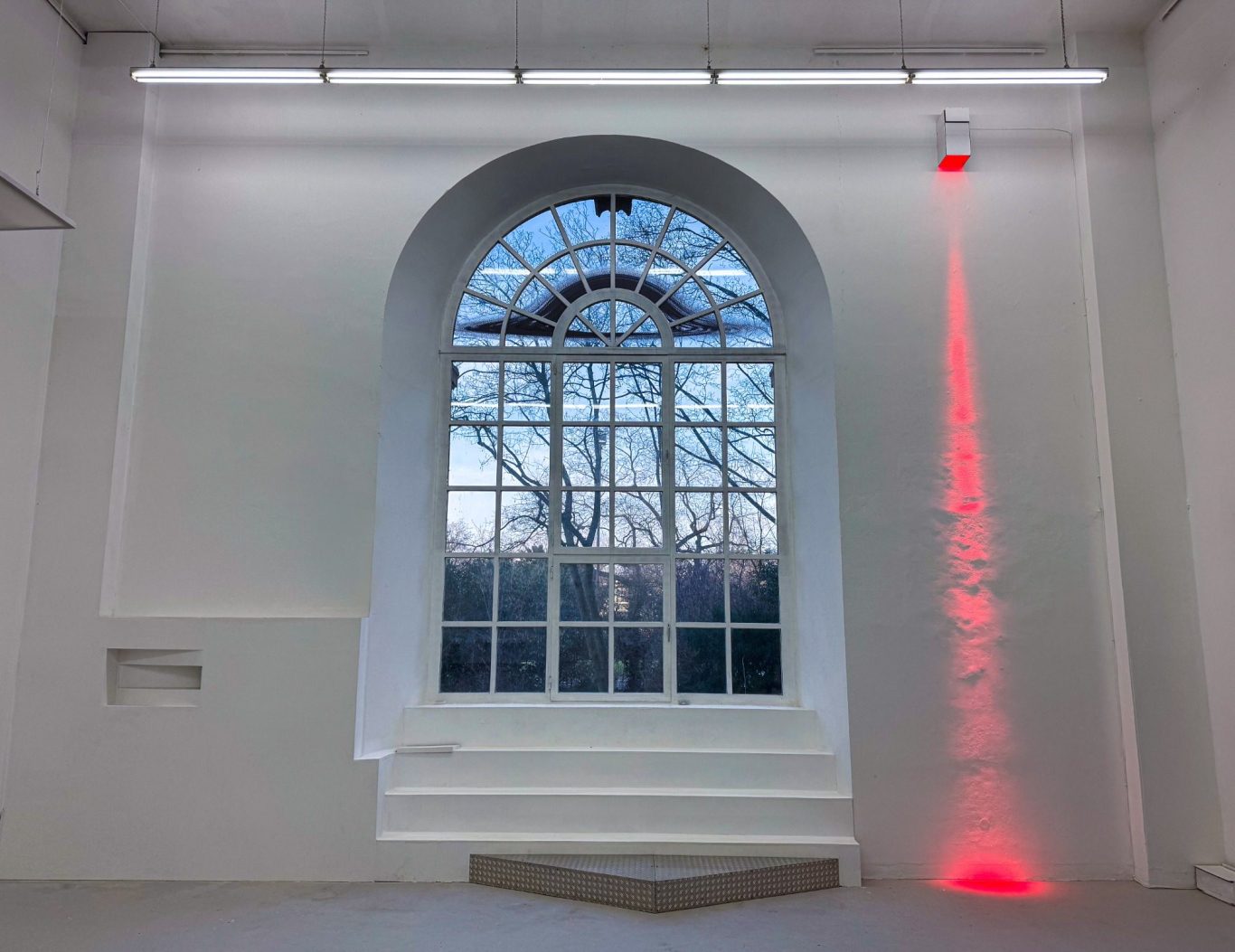
6.THE WONDROUS BEING OF TRUE EMPTINESS, 2024-25, WOOD PANEL, RED SPOTLIGHT, STAINLESS STEEL, PRINT ON OHP-FOLIE, VARIABLE DIMENSIONS

This entire wall is essentially a large “Vanitas motif,” transforming a 17th-century still-life theme into an installation.In the past, such works served as a form of warning and self-reflection—for instance, a reminder that all beautiful things and pleasures will inevitably face death and an end, revealing their illusory nature.

The Chinese translation of “Vanitas” incorporates the concept of “emptiness” (“空”). Here, “emptiness” means having nothing, but at a higher level, it suggests that there is still something within the void—content exists even in emptiness.For artists, creating art is a kind of pleasure. When we choose a form of expression, we already place ourselves in a position where we might have to confront the void.I wonder if this pleasure itself will also face an end. Do our emotions, memories, and experiences have a destination? I chose the black hole as a symbol because it represents an object of infinite mass that can trap even light. It is both a void and the opposite of a void. That is why we must continue creating. We will die, our works will disappear, but the universe will retain what it finds useful.
07.SPACESHIP
SPACESHIP, 2024, OIL AND ACRYLIC ON LINEN, 260 × 195cm

The image of the knight in the painting is inspired by the Dutch painter Gerard ter Borch's Man on Horseback Seen From Behind, which depicts a nameless knight retreating from our view in an exceptionally rare perspective. The distant architecture in the painting is derived from Qingdao's Catholic church and train station—two buildings responsible for "transporting" ideas between the East and the West. In a sense, they are "spaceships." They stand on the other side of a "door," representing the distant destination of the knight and his mirror image. They have seen what lies on the other side, yet they have forgotten themselves.
INSTALLATION VIEW
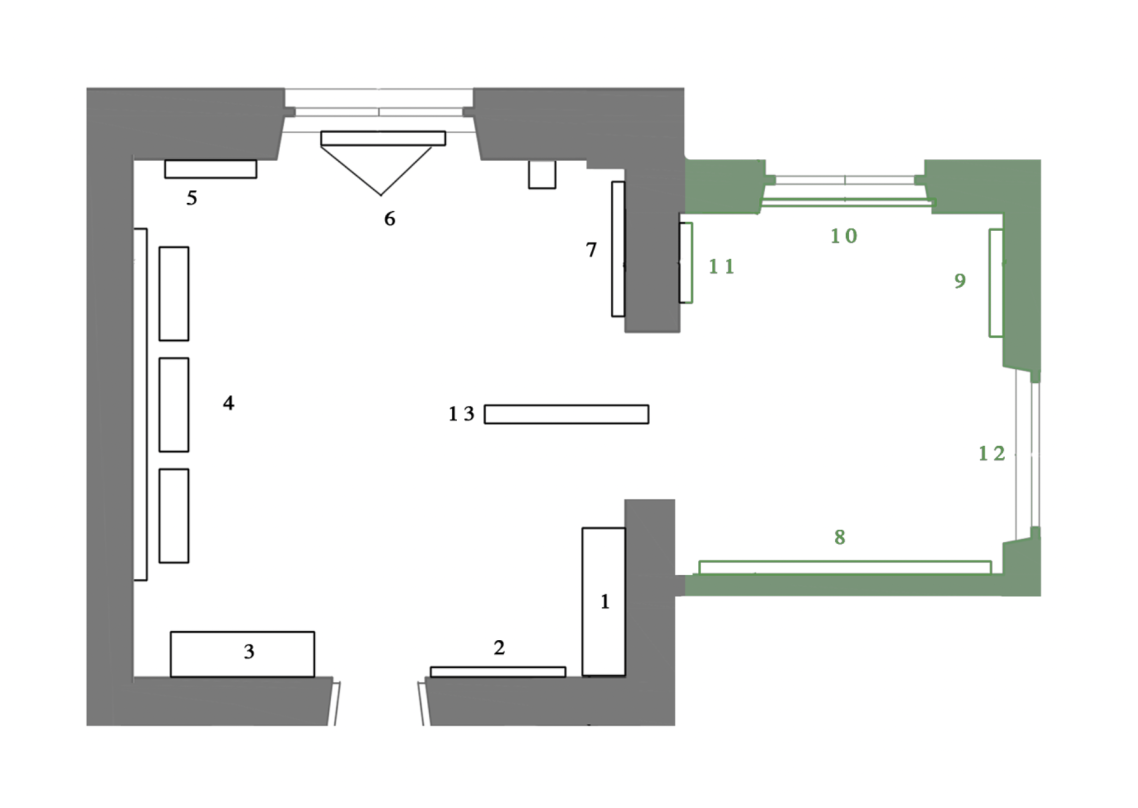
The theme of the smaller room is more personal, touching on Luan Xiaochen’s hometown of Qingdao, the colonial history of Prussian Germany, and the folklore of Laoshan fishermen.
His childhood memories of German-style architecture take shape as a window that obstructs vision: “Privacy” (10, Privacy). Opposite the window, a triptych explores humanity’s growing ambition to “interstellarize” the concept of colonization—from past intercontinental colonialism to today’s globalized perspective: “Visualization No.2” (09, Visualization No.2). Another piece combines a panoramic view of Qingdao recorded by Prussian Germany in 1900 with a half-finished painting: “Repurposing Abandoned Paintings (Study of a Moving Image II)”. There is also “Old Man Stone Bone” (11, Old Man Stone Bone), created from two fragments of reef rock transported from Qingdao to Germany. This rock, once standing 17 meters tall on Qingdao’s east coast and known as the “Old Man Stone,” was shattered by lightning two years ago. Through this work, Luan Xiaochen seeks to convey the inescapable erasure imposed by natural forces upon human history, as well as the phenomenon of synesthetic perception that arises when collective memory encounters gaps.
08.VISUALLIZATION II
VISUALIZATION II
(L: FRANZ XAVER NIES | M: MARS | R: 21ST CENTRUY )
2024, OIL AND ACRYLIC ON LINEN, L: 200 × 150cm | M: 200 / 140 × 230cm | R: 140 × 100cm
The Visualization series is inspired by a late 18th-century murder case. The first panel of the triptych depicts the moment a Prussian Catholic missionary in Shandong was murdered, an incident that sparked the colonization of Qingdao. The triptych progresses from left to right, transitioning the visual narrative from the murder to Mars as a historical symbol of war, and finally focusing on Mars as a celestial body.
The Moon represents humanity's 20th-century achievements in space exploration, while Mars symbolizes the pinnacle of such efforts in the 21st century. The colonial ambitions of the past, shifting from territories on Earth to celestial bodies, reflect a change in motivation—from power expansion to the search for sustainable environments for humanity. This evolution from primal desires to the exploration of the unknown parallels the painter’s motivation in the act of creation.
Kunstakademie Düsseldorf, Room 001, 2025 Graduration Exhibition

Kunstakademie Düsseldorf, Room 001,2025 Graduration Exhibition
VISUALIZATION II (L: FRANZ XAVER NIES )
2024, OIL AND ACRYLIC ON LINEN, L: 200 × 150cm
VISUALIZATION II (M: MARS )
2024, OIL AND ACRYLIC ON LINEN, M: 200 / 140 × 230cm
VISUALIZATION II ( R: 21ST CENTRUY )
2024, OIL AND ACRYLIC ON LINEN, R: 140 × 100cm
09.REPURPOSING ABANDONED PAINTINGS
(STUDY OF A MOVING IMAGE II)
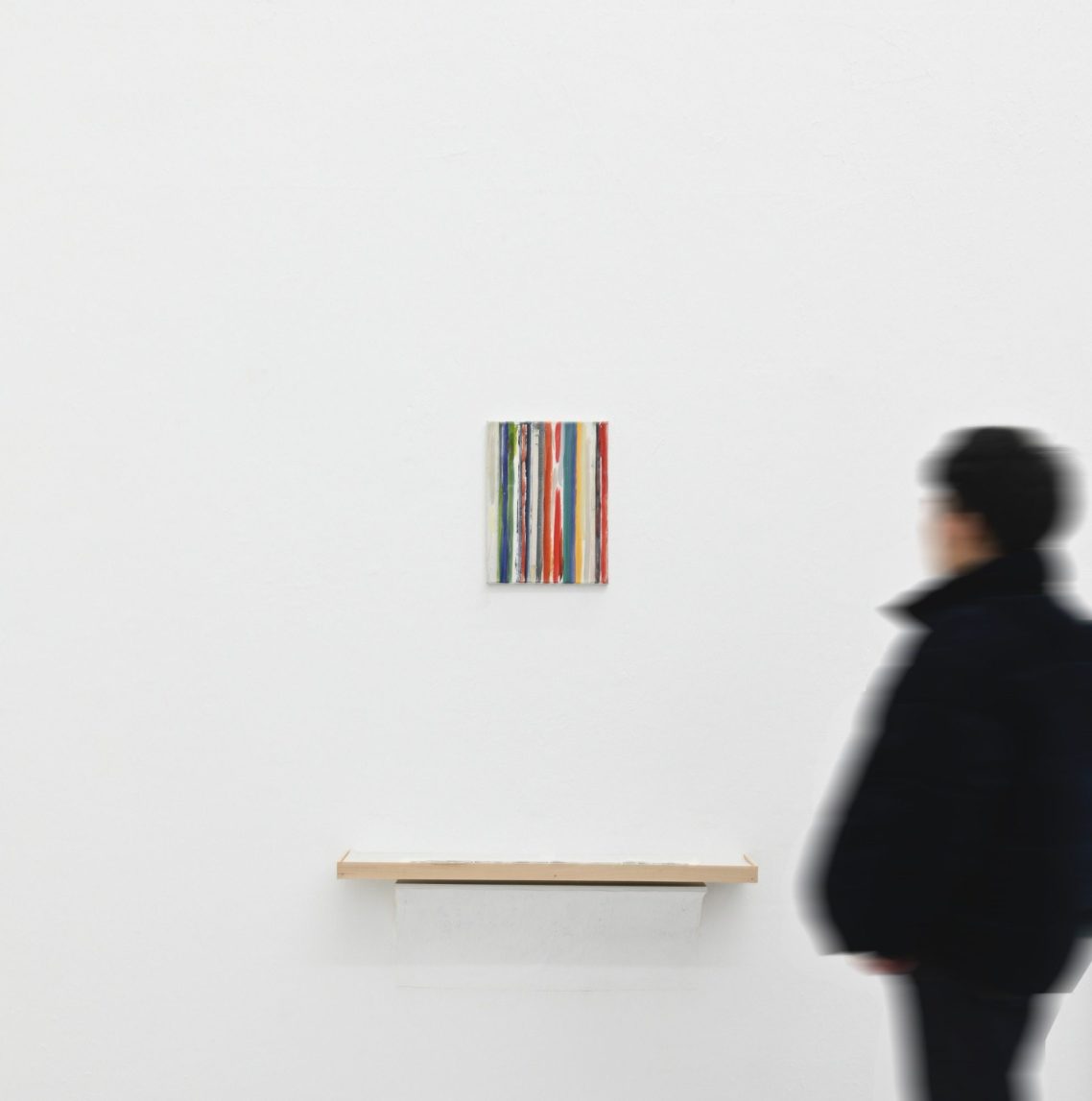
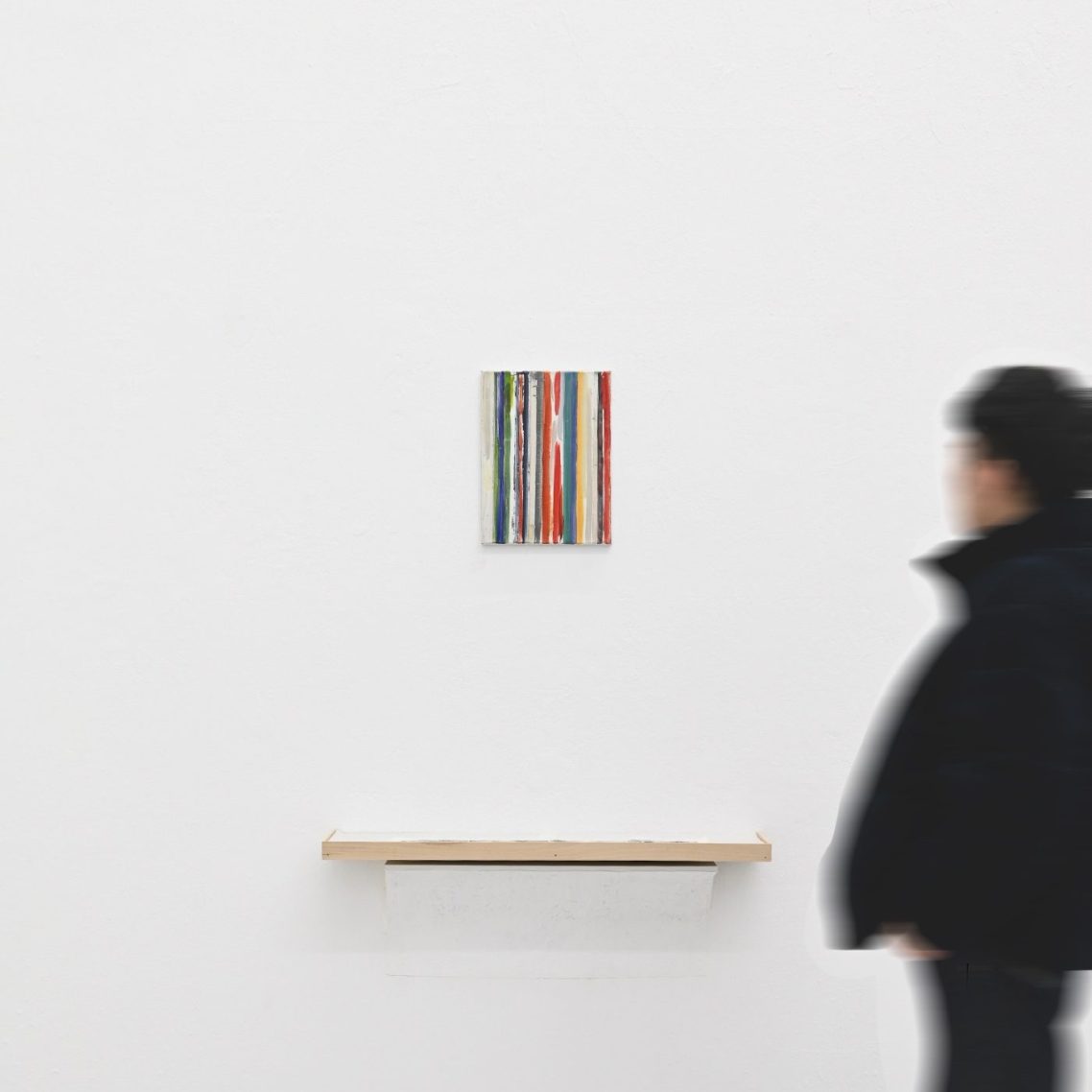
9.REPURPOSING ABANDONED PAINTINGS (STUDY OF A MOVING IMAGE II)
2022, OIL ON LINEN, PRINT ON ARCHIVAL PAPER, WOOD PANEL, ADHESIVE TAPE, 50 × 40CM
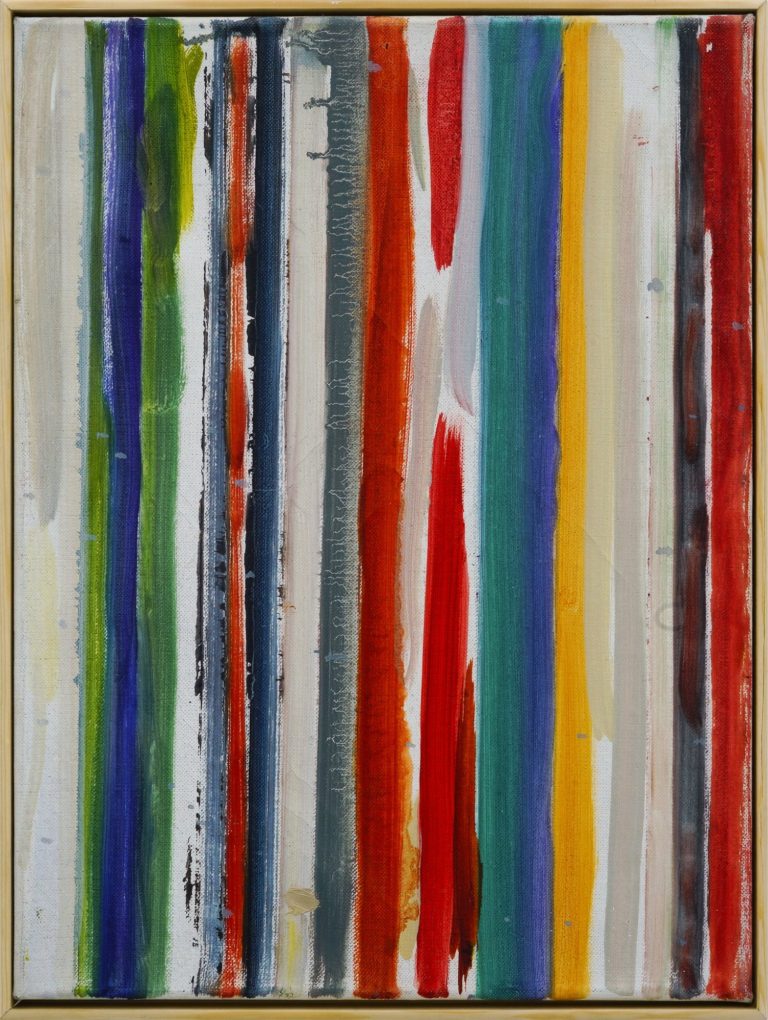
The image comes from a panoramic photograph taken in 1905 in my hometown, Qingdao, by Prussian Germany, preserved in the Federal Archives of Germany. Due to the composition of the image, which is divided into foreground, middle ground, and background, my initial idea was to process these three parts using three different colors. The painting contains eight sets of color combinations. However, one day, for reasons unknown, I decided not to complete this work. This unfinished piece, though incomplete, still left traces in a different way.

© Bundesachiv Deutschland
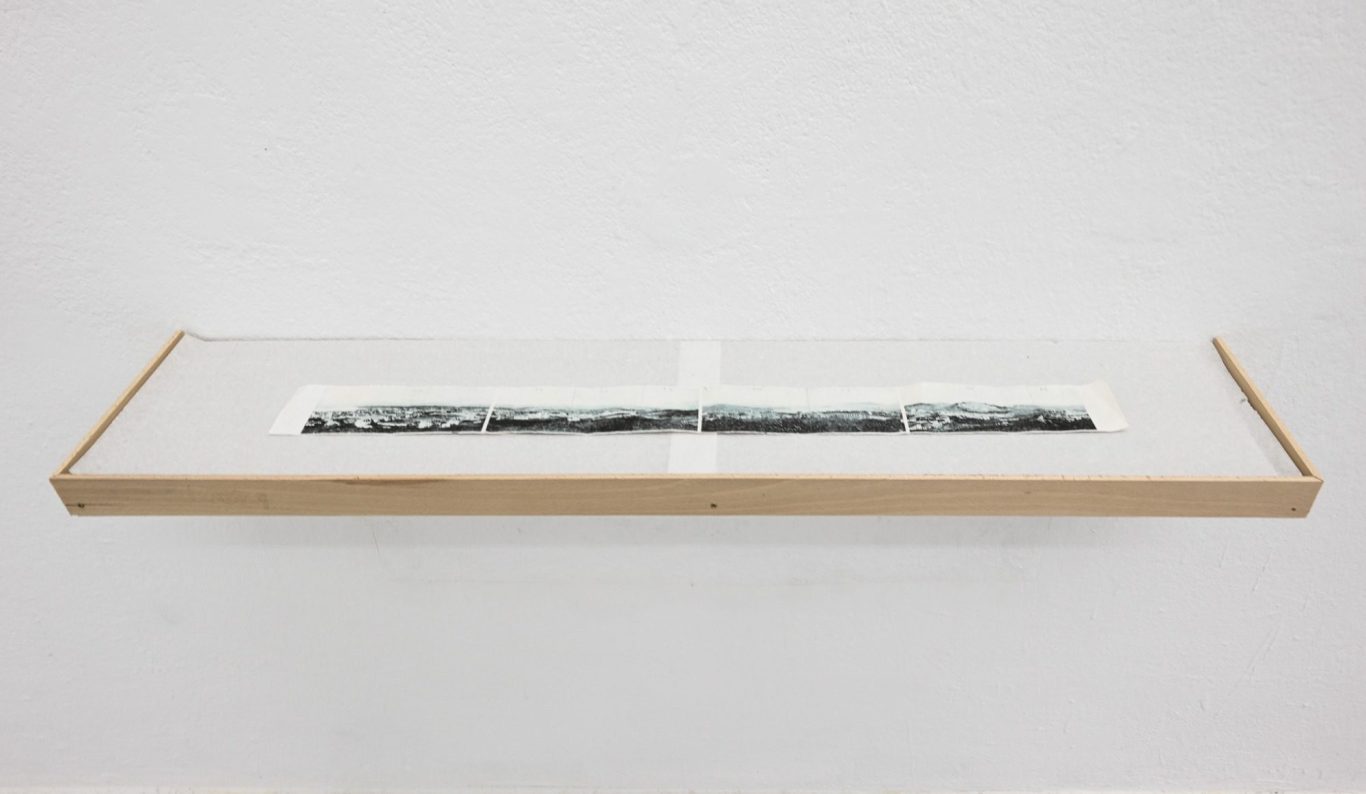
© Bundesachiv Deutschland

10.PRIVACY
10.PRIVACY, 2024, PVC-FOLIE, VARIABLE DIMENSIONS
11.STONE OLD MAN
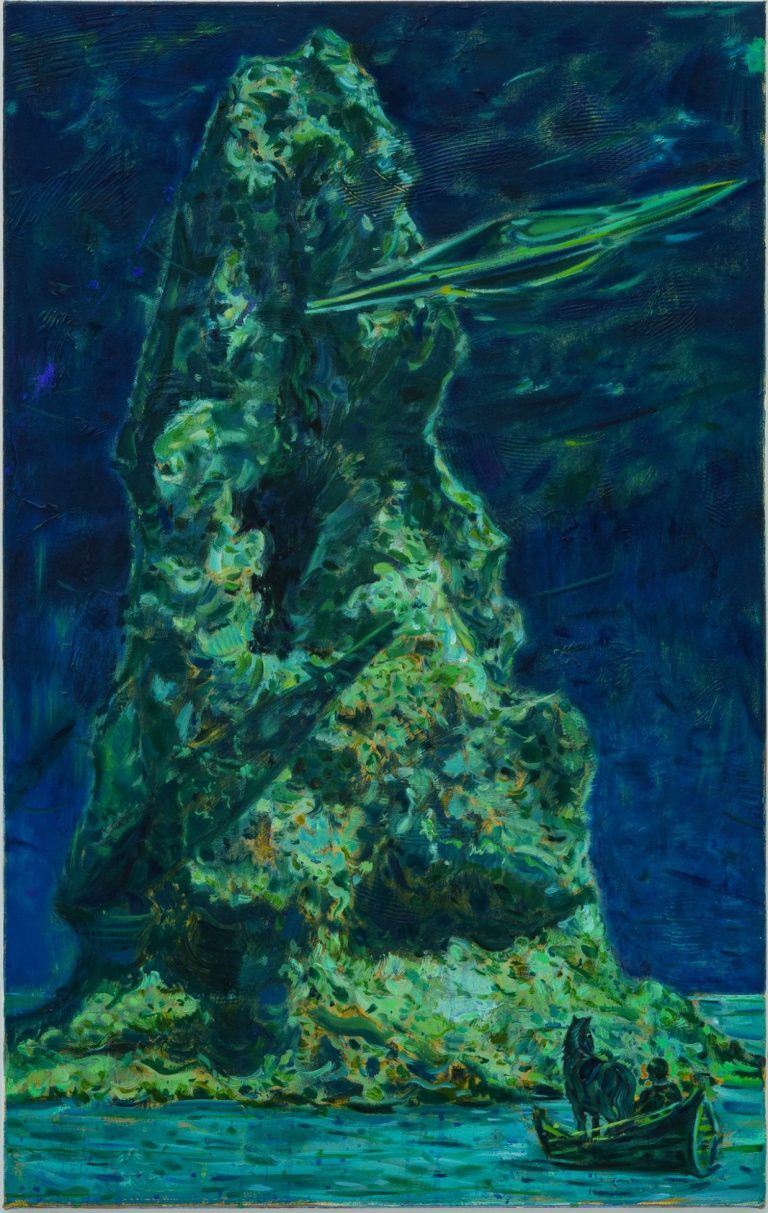
STONE OLD MAN, 2024, OIL ACRYLIC ON CANVAS, 95× 60 cm
This reef, called "Stone Old Man," is located on the eastern coast of Qingdao. According to legend, it was formed from an old man who turned to stone while waiting for his daughter, who had been taken by the Dragon King. Standing 17 meters tall, it had endured for millennia until a thunderstorm in 2022 shattered the reef with lightning. This event deeply moved me, even from afar overseas. The theme of the artwork revolves around the concept of "plunder," simultaneously reflecting the plunder within the legend and the overwhelming force of nature's unpredictability, which acts as a form of plunder against future generations.

12.STONE OLD MAN BONE & NAME OF STONE OLD MAN
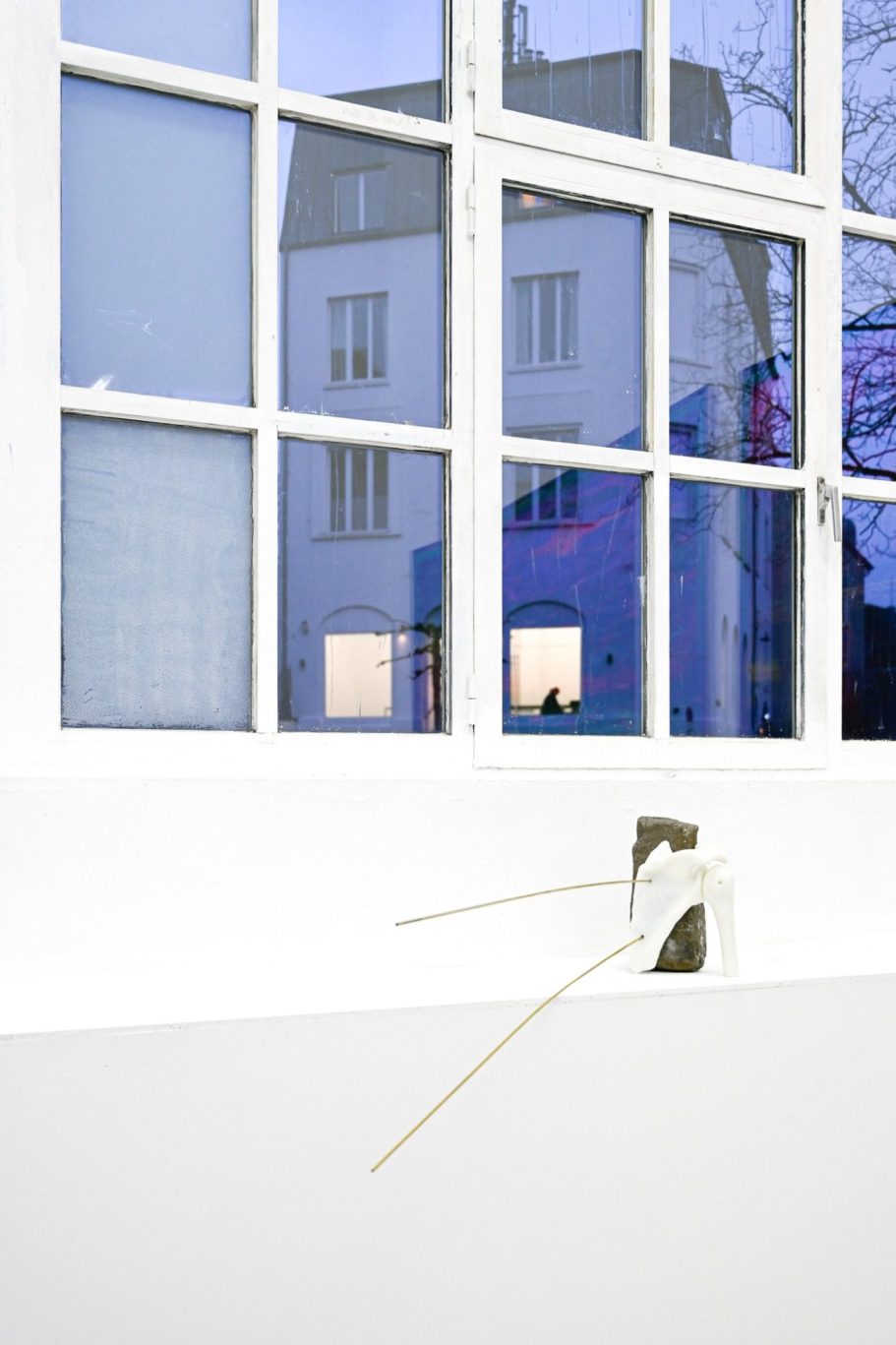
STONE OLD MAN BONE, 2024, GRANITE, 3D PRINTING, COPPER, 40 × 120 × 15 cm
I brought fragments of the "Stone Old Man," shattered by lightning, from Qingdao to here. These fragments were combined with 3D-printed artificial bones, showcasing the relationship between the spirituality inherent in natural elements and the material properties of the organic human body. Naming a peculiar stone and witnessing its destruction by lightning transforms an immortal natural entity into a state with a finite lifespan. After death, a person can become "immortal" through the emotions and memories of the living. In this work, "imparting emotion" connects the dual characteristics of "destruction" and "continuation" of life on the boundaries of existence.
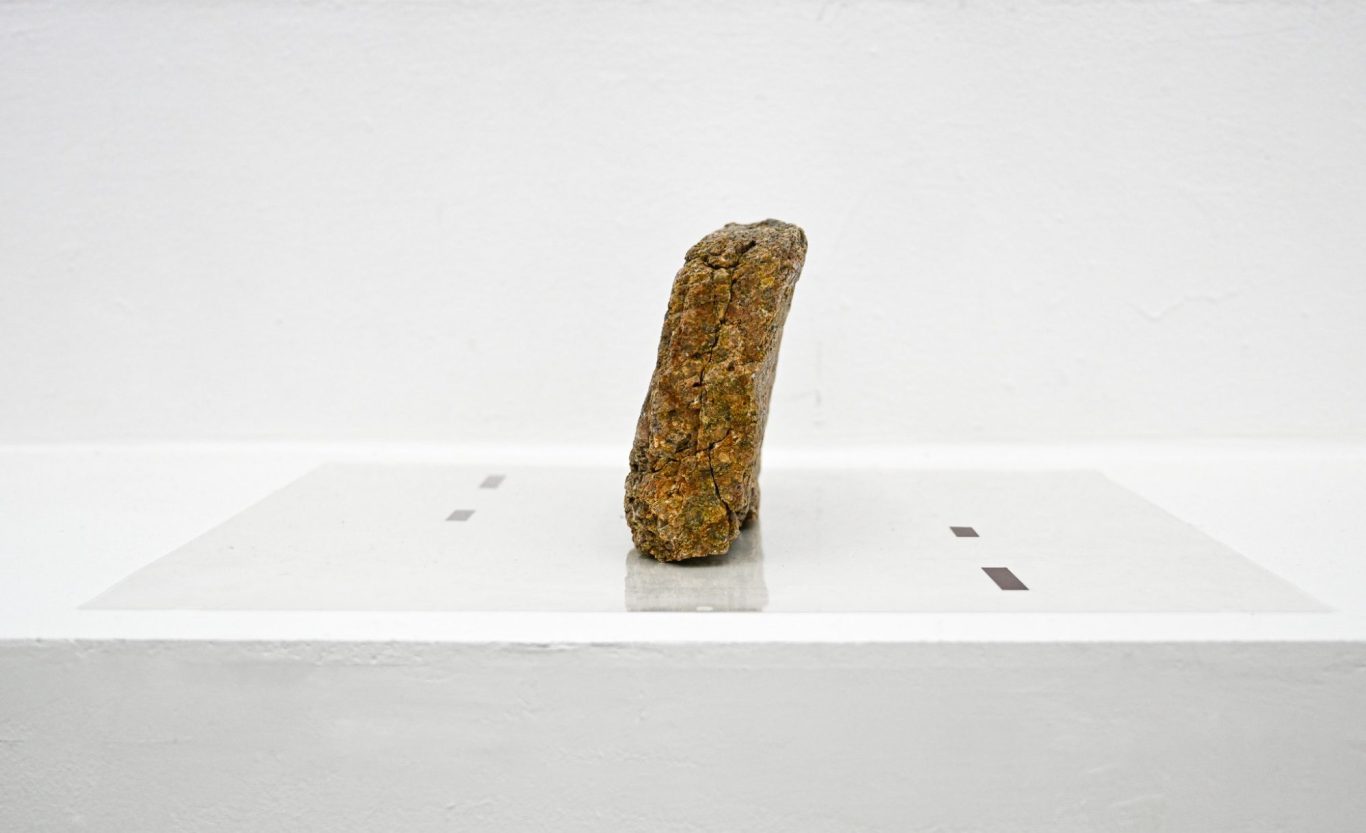
NAME OF STONE OLD MAN, 2024, GRANITE, ARCHIVAL PAPER, ADHESIVE TAPE, 40 × 120 × 15 CM
13.CANGLANG TANK

CANGLANG TANK
2024-25, WATER, WOODEN BOARD, TELESCOPIC MACHINE, ACRYLC, PVC, STAINLESS STEEL, WATER-SOLUBLE COLORS, METAL FILM, 163 × 264 × 20CM
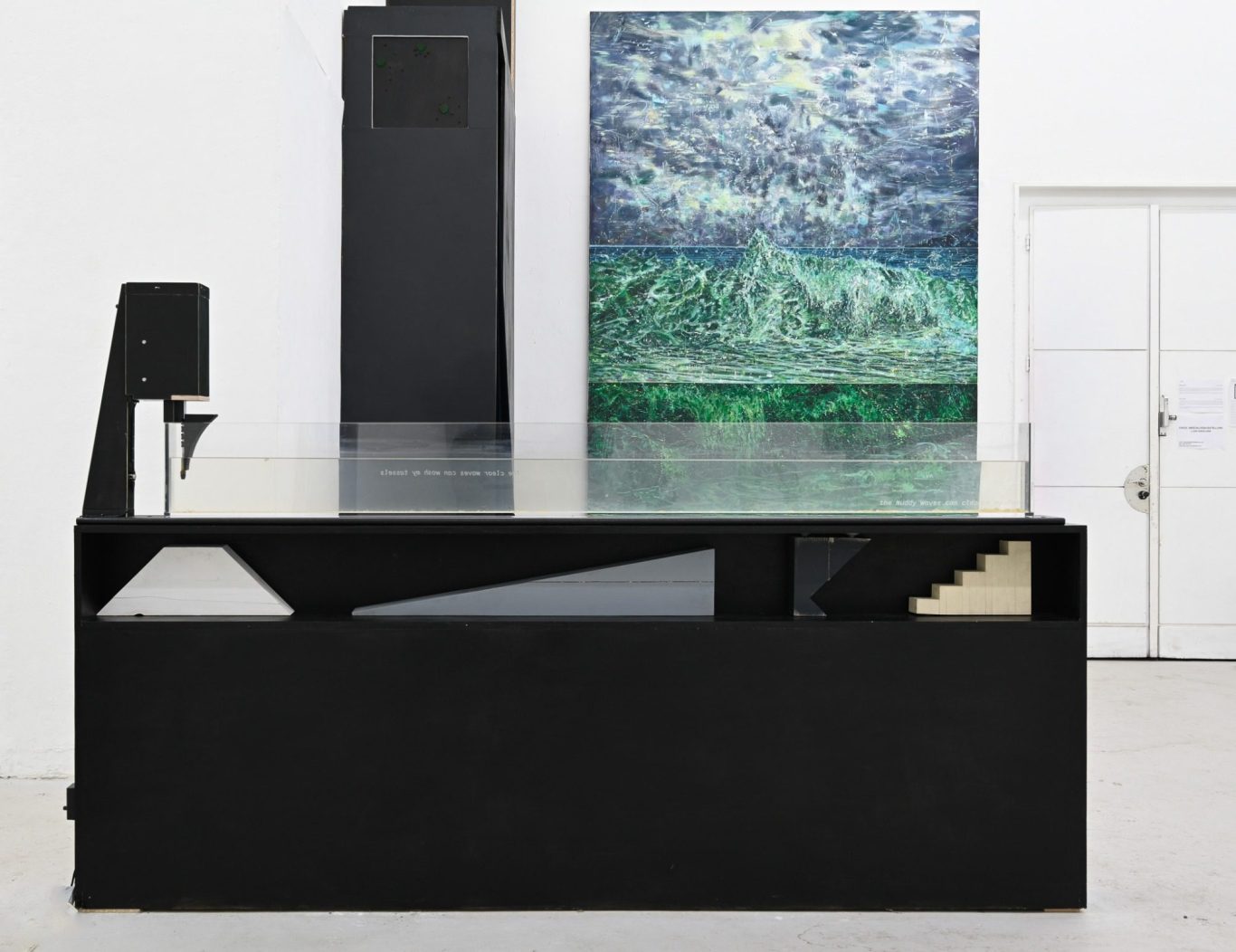
This spot serves as a passageway between two spaces and is also a focal point for the gaze within the room. In ancient.Chinese gardens or residential spaces, this position required the use of a man-made object that mimicked nature. These objects often appeared in the form of screens or pavilions. In Chinese, their meaning refers to a place where people pause, allowing them to interact with the man-made object and experience an abstract sense of “the distant”—something priceless. When such “man-made objects” become commodities in a capitalist society, they often carry an inherent contradiction: they exude elegance while also embodying a certain vulgarity. This contradiction is also a fundamental issue of art itself. However, it is not a cause for concern, as this issue can be resolved through a particular value system:we can adjust our pursuit of “value” and “price” at any time according to our own needs.
沧浪之水清兮,可以濯我缨;沧浪之水浊,可以濯我足。
The clear waves can wash my tassels; the muddy waves can cleanse my feet.
© LUAN XIAOCHEN, ALL RIGHTS RESERVED.
Wir benötigen Ihre Zustimmung zum Laden der Übersetzungen
Wir nutzen einen Drittanbieter-Service, um den Inhalt der Website zu übersetzen, der möglicherweise Daten über Ihre Aktivitäten sammelt. Bitte überprüfen Sie die Details in der Datenschutzerklärung und akzeptieren Sie den Dienst, um die Übersetzungen zu sehen.


































